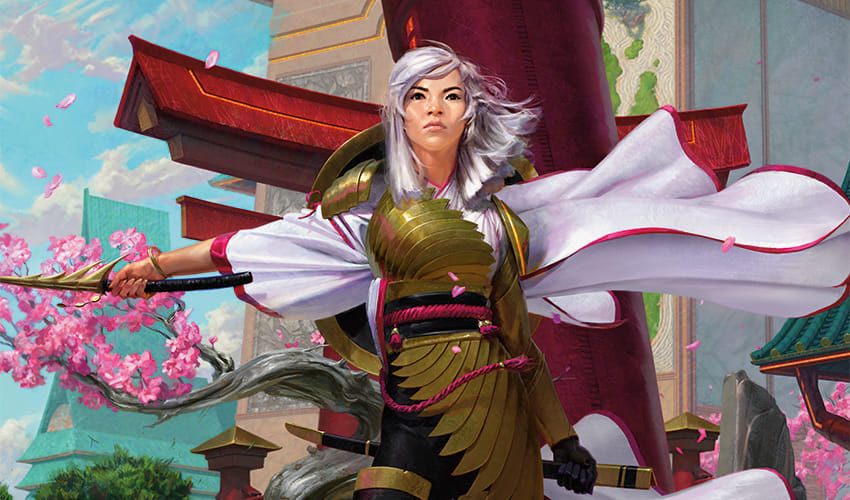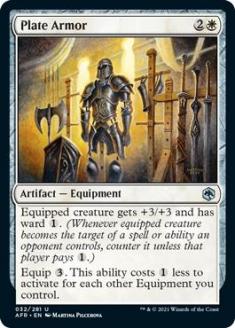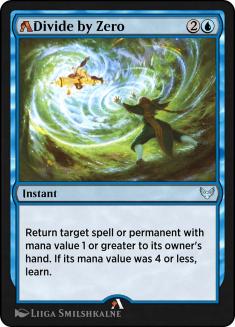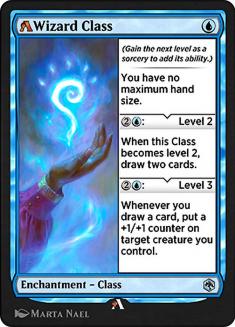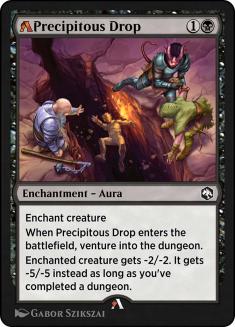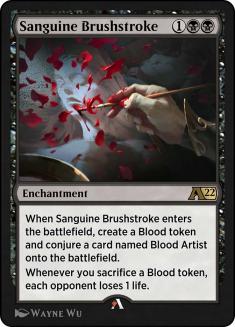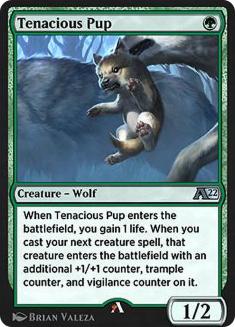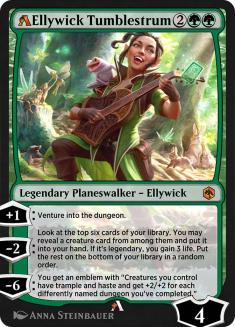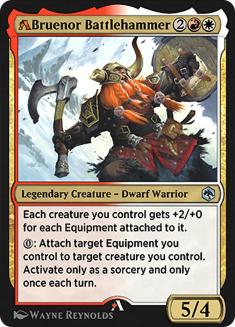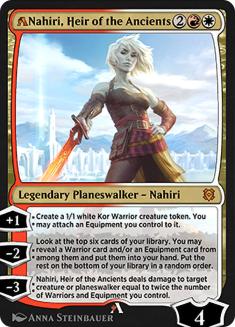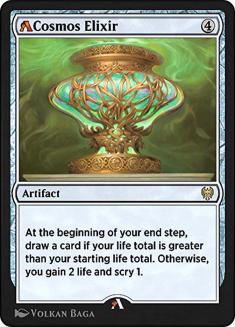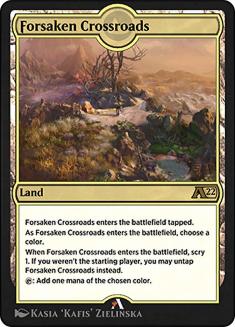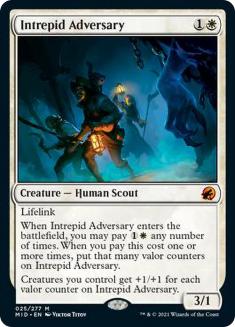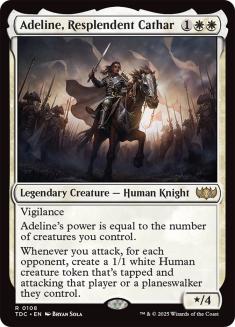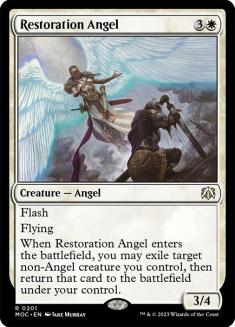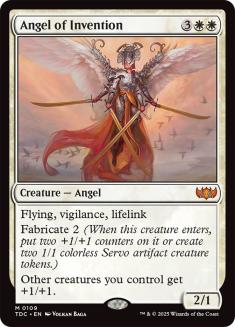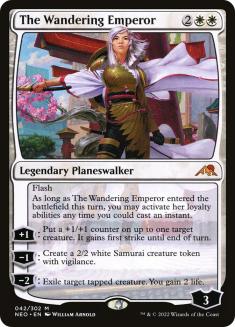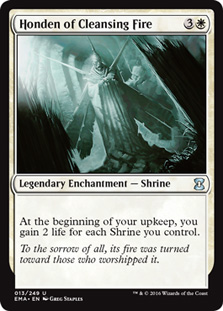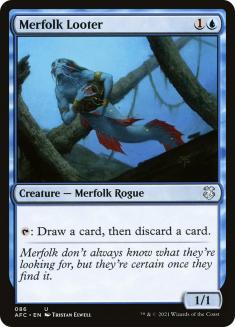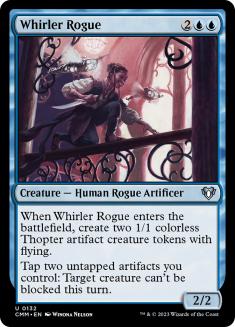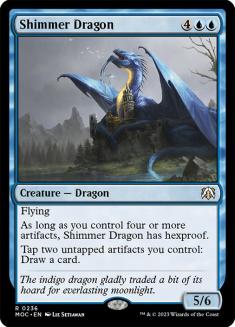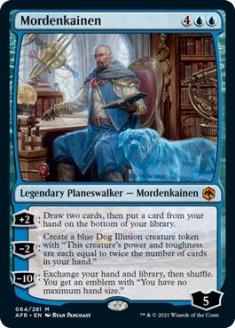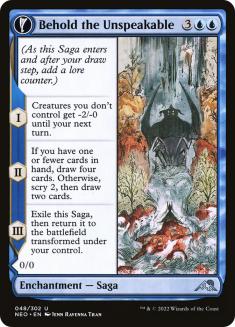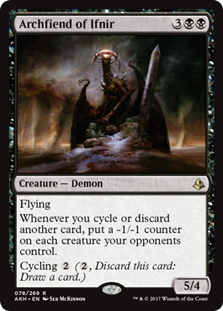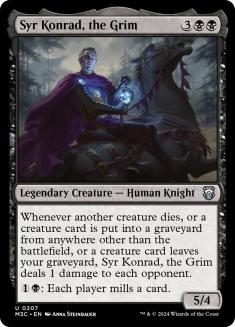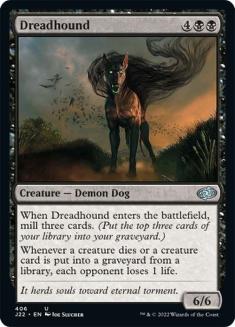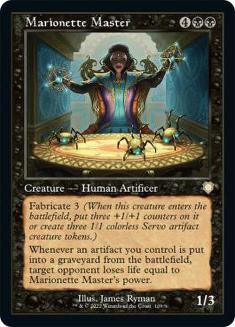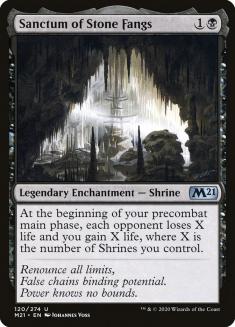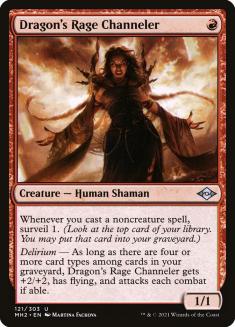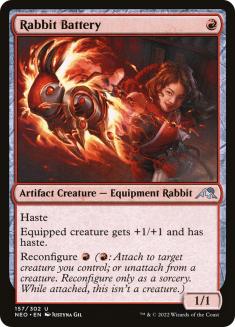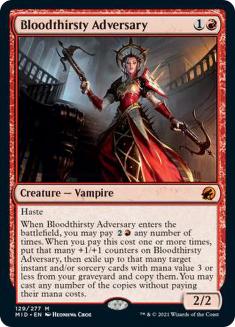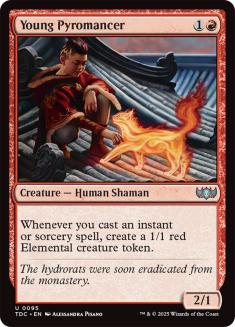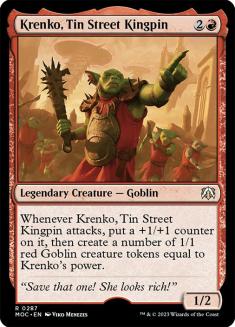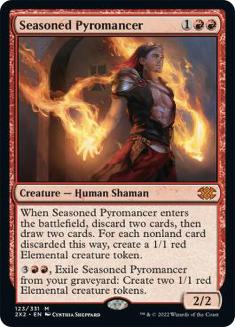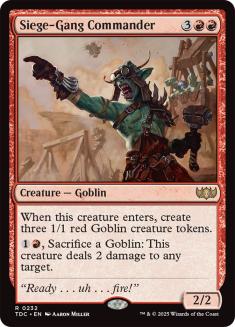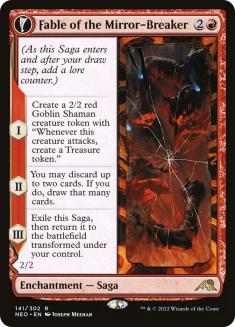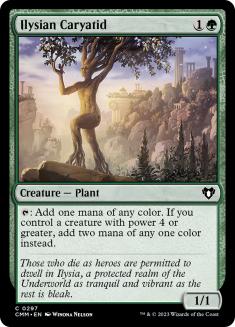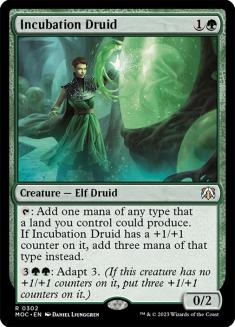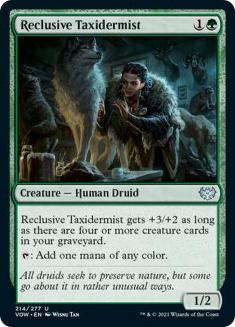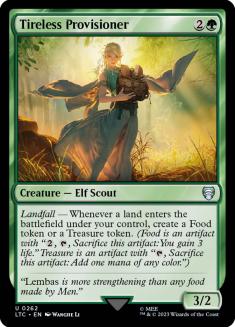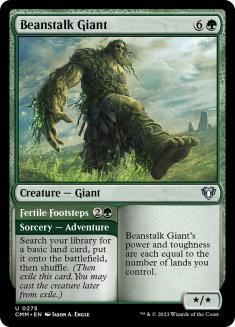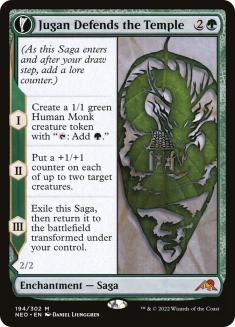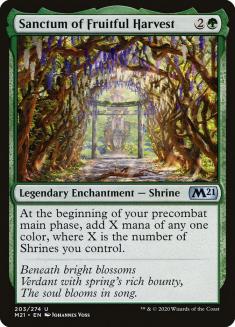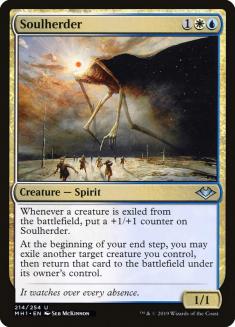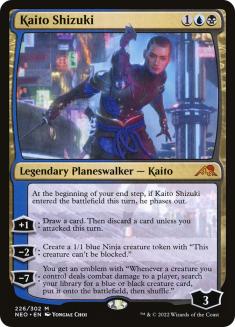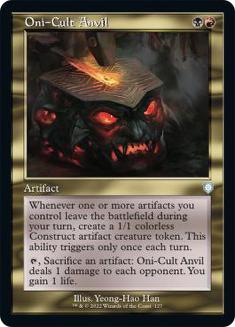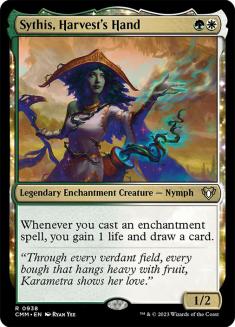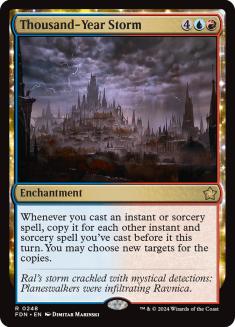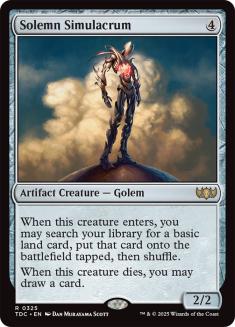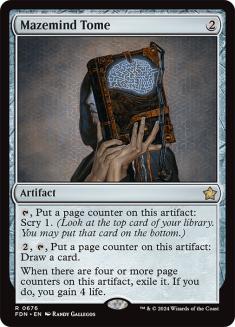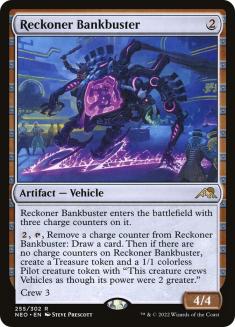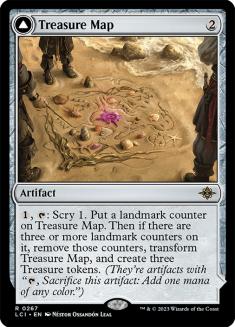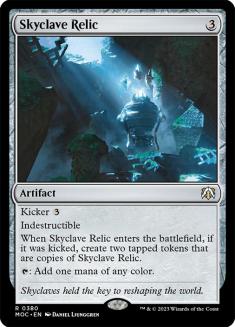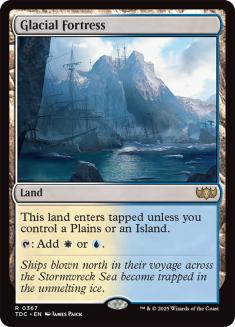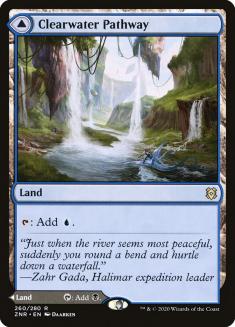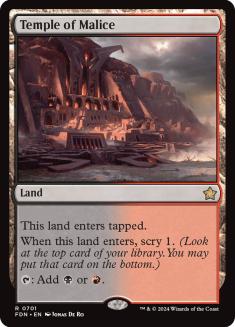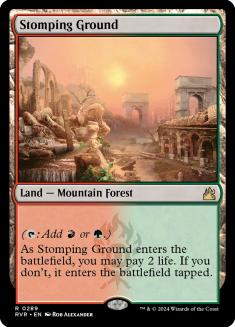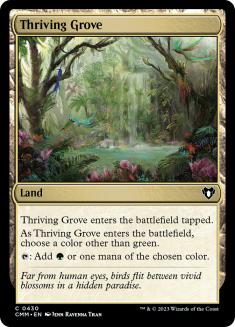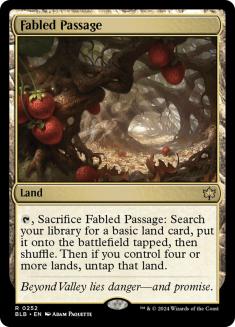With Streets of New Capenna’s release just on the horizon, we find ourselves in the void of time between Limited formats typically populated by digital Cubes, and this week is no exception to that trend. Last Friday, the Tinkerer’s Cube returned to Magic Arena, and it will be continuing its run through the 28th of April, leaving us another week and a half to draft the Cube.
I wrote about this Cube’s previous iteration just before the release of Innistrad: Midnight Hunt, but it’s worth noting that nearly half of the cards in the Cube have been changed between then and now. I imagine that we will see these massive overhauls fairly regularly with the Arena Cubes as the card pool on the client expands, especially as we see more digital-only cards. With the change log being as long as it is, I won’t go over every card moving in and out, but I will address the most significant cards in the spread. You can find the updated Cube list on Cube Cobra.
Power Band
The first broad point to address is that despite massive changes with regard to individual cards, the Cube is maintaining the wide power band that I discussed in my previous article on the format. Some of the strongest as well as some of the weakest cards have been cut from the Cube, but you’ll still see the occasional pack that contains both Glorious Enforcer and The Wandering Emperor, and you’ll always want to err on the side of lean and efficient if you want to post winning records. The Cube rewards assembling synergies, but not enough to draft Limited-grade cards over Constructed staples.
Digital Cards
The other broad point I would like to address is the presence of those digital-only cards. Whether these are buffs, nerfs, or cards that exist only on Arena, I think it’s useful to have the list of all of these cards in one easy-to-find place. Most of the Arena that I play tends to be these Cubes, so I know that keeping track of all the digital cards is tough for at least me. Here’s the crib sheet:
Most of these aren’t terribly significant, but reducing reading during the draft makes it much easier to focus on making meaningful decisions. The two standouts in this list are Sanguine Brushstroke as a role-player in sacrifice decks and Forsaken Crossroads as a land that I’d play in basically any deck of two or more colors, even if it’s not necessarily a high pick.
With these notes in mind, let’s take a look at the Cube by color and identify the most powerful individual cards!
White
White got some nice updates for this run, with the most of the power still rooted in aggressive decks. Thraben Inspector will of course make any white deck, and cards like Isamaru, Hound of Konda and Usher of the Fallen will allow you to establish an early lead. The top of your curve will matter a little more than how you start the game, but there are lots of powerful options here.
I was actually quite surprised to see Intrepid Adversary and Adeline, Resplendent Cathar on the list, as these cards represent the opposite of what I imagine “tinkering” suggests. These are high-power beatdown cards that close games swiftly. No synergies required.
While I’m not as big on The Wandering Emperor as some, it has exceeded my expectations to this point. I’m still medium on the card for high-power Cubes, but in a format like this with a lot of lower-power cards, it’s pretty easy to clean up with any reasonably powerful planeswalker. I would also expect The Circle of Loyalty to be a huge swing in any longer game in this environment.
Shrine Time
This run of Tinkerer’s Cube includes most of the mono-colored Shrines, and I could see a small Shrine package or even a dedicated Shrine deck being worth drafting if you can make mana work. I’ve Cubed with Shrines quite a lot, and the bit of non-obvious advice that I can offer is that Honden of Cleansing Fire is much more important for these decks than it might appear.
It might not be the most powerful of the lot, but Shrine decks don’t always have very high closing speed, and gaining a bunch of life will often be a better avenue to victory than filling your deck up with other ways to close the game. Realistically you’ll want interaction, mana-fixing, mana ramp, and accounting for nearly every spell in your deck, and burying your opponent under a mountain of life will be a common win condition for these decks.
Blue
There’s some neat aggressive stuff in the blue column, but for the most part you’ll win a lot more games with Whirler Rogue than Slither Blade. Curious Obsession is cool and all, but I’d try to wheel it if I even intended on playing it. As per usual, the best blue decks will have some powerful interaction and easy access to card selection/advantage.
Blue could very well be the weakest color in Tinkerer’s Cube, and many of the cards are wholly unexciting. The Curiosity plan may very well be the best thing that blue has to offer. These decks are fine and have a high ceiling, but they’re vulnerable both to removal spells and more efficient aggressive decks racing. When the stars align, these decks are excellent, but there are some inherent risks with this archetype.
I continue to lament the low consistency of Drake Haven in Tinkerer’s Cube. It just takes a higher volume of cards that loot to really make this sort of thing work. You can pull it off now and again, but the card just isn’t the flagship here that I wish it was and know it can be in smaller and more dedicated Cubes. Blood tokens and Dying to Serve do help matters, but mostly these decks just spin their tires and fold to decks that require less setup.
Black
A lot of black’s strength in Tinkerer’s Cube is centered in aggressive sacrifice decks, though there are some other avenues to explore. There aren’t many standouts for black here, but an honest value creature like Callous Bloodmage will outperform a lot of the other filler in the Cube. Black has very few generically powerful cards, but sacrifice decks at least don’t demand a lot from the drafter, so the best sacrifice cards are still relatively high picks.
We’re looking at expensive cards and cards that can win the game out of combat. Closing with Marionette Master with the assistance of Treasure and Blood tokens is both incredibly fun and not all that difficult. Dreadhound looks a lot like Limited filler, but the power level in this Cube is low enough that it’s actually a very meaningful curve-topper.
It’s worth pointing out that Sanctum of Stone Fangs is arguably the most powerful Shrine. It does work to actually close the game and pads your life total. Go-Shintai of Hidden Cruelty is also solid, but Honden of Night’s Reach is probably the weakest Shrine in the Cube. You won’t necessarily want to play black in every deck with a Shrine package, but Sanctum of Stone Fangs specifically is a big draw.
Red
Red occupies a pretty similar space to black in Tinkerer’s Cube, with the exception being that it has more cheap and efficient aggressive cards and fewer high-impact, expensive cards. On balance, I like the red side of this, but your mileage may vary.
I’m largely ignoring all the expensive and cool red cards and just planning on being aggressive. I like Double Vision and think there are some fun archetypes with high ceilings seeded here, but I’d like to see them pushed a little more before I really pursue drafting them. Seize the Spoils is a good start, but let’s go the full nine and give me Unexpected Windfall and Galvanic Iteration!
Green
The most powerful mana acceleration isn’t present in the green column, but the mana acceleration that is included makes up the most powerful options for green. I’m not about to endorse Woodland Champion, but I’ll take Incubation Druid over most of the cards in the Cube.
I’m sure I’ll catch some heat for this one, but in most environments Hardened Scales is closer to a mulligan than a deck-defining card, and this Cube list doesn’t offer enough to have me giving the card a second look. Your creatures with +1/+1 counters are either worth playing or they’re not. Evolution Sage is a far more playable support card for these decks, though even with that one, I’m taking it when it seems appropriate and not trying to force anything.
Green will be the base color for most successful Shrine decks, and Sanctum of Fruitful Harvest solidifies this fact. It both fixes your colors and accelerates your Shrines out, and if I found myself wanting to draft a Shrine deck, I would generally want to start there.
Gold
Some of the best gold cards are achetype-specific and will heavily influence your pick order, but I’m still primarily focused on the matter of rate. Soulherder is indeed a powerful blink card, but that’s an extension of Soulherder being a powerful card.
The quantity of mana-fixing lands in this Cube is modest, so I’m generally looking for lands before I’m looking for gold cards, and I don’t consider the four Environmental Sciences a powerful way to get three or more colors of mana online consistently.
Artifacts
My notes on the colorless column are fairly close to my notes on the gold column. Some cards here fit into the synergies of the Cube meaningfully, but again, I’m picking them highly for their individual card power. Containment Construct is quite good when it works, and quite weak when it doesn’t. I’m looking for something with time-tested reliability like Treasure Map.
I imagine that the buffed Cosmos Elixir is very powerful in grindy matchups as a one-sided Howling Mine, though with so many of the most powerful cards in the Cube having an aggressive slant, I’m not looking to first-pick a card like that.
Lands
Tinkerer’s Cube features checklands, Pathways, Temples, shocklands, Thriving lands, a couple of five-color options, and even more mono-color utility lands.
I’ll often aim to draft white or red-based aggressive decks in this Cube, and I wouldn’t value lands highly until I knew what my second color was for these decks. In general, I would say that mana-fixing lands in Tinkerer’s Cube are mid-pack picks, but they’re well worth speculating on when the most powerful cards aren’t present. An untapped Boros land to set myself up to beat down and a green dual to settle in for a “mana and stuff” slog are both reasonable options.
There’s very little value in the utility lands in Tinkerer’s Cube, and I generally consider the Kamigawa: Neon Dynasty channel lands to be downgrades from the Adventures in the Forgotten Realms creature-lands. I’ll definitely play them, but I’ll never draft them highly.
It’s always a little strange to get these Cubes with so many updates right before a new set launches, but I’m always grateful to have a digital Cube available. If you’ve drafted Tinkerer’s Cube before, then I don’t imagine you’ll have to re-evaluate your fundamentals, and if you’re new to the Cube, I don’t believe it has all that steep of a learning curve.

